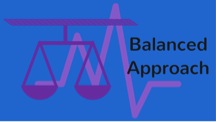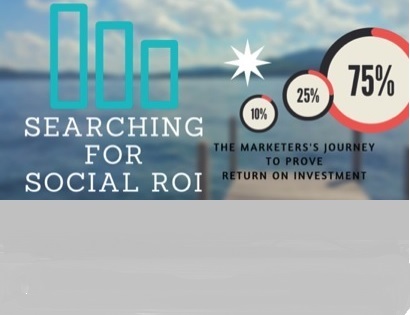Getting the ROI from your Social Media Marketing
Many marketers and CFO’s are asking – just what is reliable social ROI? The topic is vast, with many metrics and perspectives, so I went searching.
Goals
More often than not, the answer to this big question is that it depends on your goals. So, first step is to determine those goals. Often, increased sales is a goal. But, industry website Social Media Examiner recommends to think beyond revenue to customer service and public relations.
Tools
Use analytics tools to help determine the right platforms. This depends on who your users are and where they spend their digital time. Track time and cost, and then report findings that clearly display the social impact of campaigns. With this  information, you can calculate ROI, and optimize by resetting goals.
information, you can calculate ROI, and optimize by resetting goals.
Metrics
The top 5 social media metrics are usually Reach, Traffic, Leads, Customers, and Conversion Rate. Hubspot suggests to conduct a social media audit to focus and fine tune your efforts. But, other sources show research that some marketers have been moving away from metrics like these to measurements of Reach, Engagement, and Sentiment. Shares on Facebook and other social platforms, are particularly valuable indicators of these.
Beyond Metrics
Many brands are “realizing that social media isn’t a transactional engine or a sales machine.” According to John Heggestuen of Business Insider, some newer metrics are things like audience building, brand awareness, and customer relations. He notes that even as metrics are evolving, social media budgets are growing.
More Tools – and Features
Measurement and analytic tools like Hootsuite and Buffer allow you to set and track social media goals across social platforms or channels. Beyond likes, reach and engagement, Hootsuite also suggests adding revenue generated, and that seems fair. If more revenue is measured to be generated during a campaign, then marketing efforts can be attributed as part of the reason for that revenue. Use measurement tools like Hootsuite Analytics, Salesforce, and Google Analytics to bring all the information together. For easy tracking and display without having to generate reports, use analytics templates. Buffer’s blog admits we are not alone if we feel like the idea of social media ROI is overwhelming. Buffer blog author Kevan Lee acknowledges that “there are no dollar signs dangling from retweets or likes.”
A Balanced Approach
 So, what is effective social ROI? Market research authority Forrester argues for the ROI of Social Media Marketing to be “more than dollars and cents.” Forrester points out there are several measurement factors to consider including short and long term benefits and financial or non-financial benefits. Using a balanced scoring method helps to “align measurement to all corporate objectives and not just sales.” This helps avoid “short term gains at the expense of long term brand health.” A balanced approach considers different perspectives like financial, brand health, risk management, and digital content assets. Using only one perspective risks getting an incomplete picture.
So, what is effective social ROI? Market research authority Forrester argues for the ROI of Social Media Marketing to be “more than dollars and cents.” Forrester points out there are several measurement factors to consider including short and long term benefits and financial or non-financial benefits. Using a balanced scoring method helps to “align measurement to all corporate objectives and not just sales.” This helps avoid “short term gains at the expense of long term brand health.” A balanced approach considers different perspectives like financial, brand health, risk management, and digital content assets. Using only one perspective risks getting an incomplete picture.
AMA Boston Connects with Social Media Marketing Leaders!
 The best way to get insight into measuring social media ROI is to hear from a group of credible sources who are dealing with these issues every day. AMA Boston has just completed an event addressing Social Media ROI issues with an exceptional panel of social media and digital managers from the Boston area featuring Young Women in Digital.
The best way to get insight into measuring social media ROI is to hear from a group of credible sources who are dealing with these issues every day. AMA Boston has just completed an event addressing Social Media ROI issues with an exceptional panel of social media and digital managers from the Boston area featuring Young Women in Digital.


